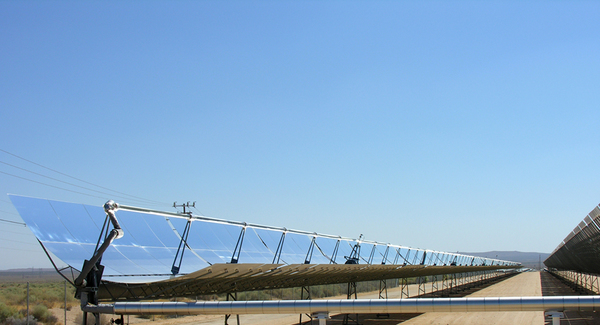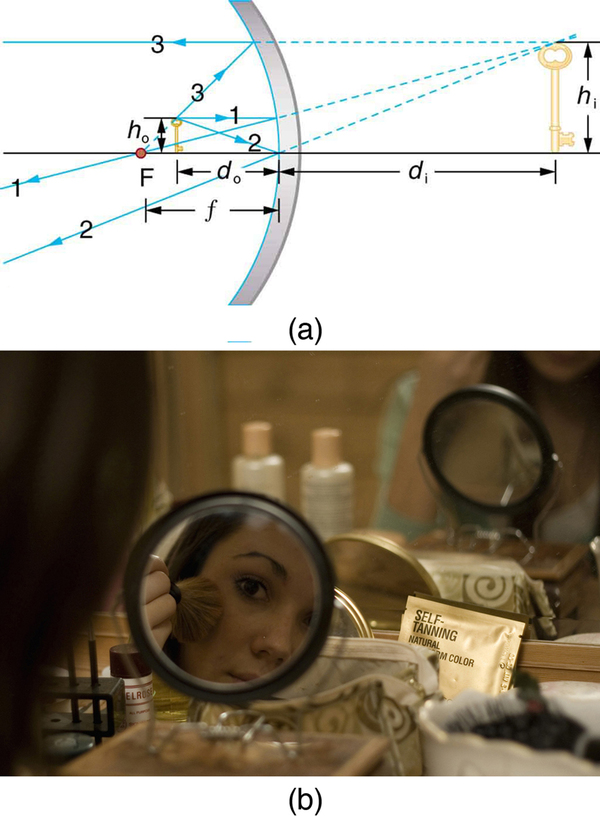| << Chapter < Page | Chapter >> Page > |
Strategy
To solve an Integrated Concept Problem we must first identify the physical principles involved. Part (a) is related to the current topic. Part (b) involves a little math, primarily geometry. Part (c) requires an understanding of heat and density.
Solution to (a)
To a good approximation for a concave or semi-spherical surface, the point where the parallel rays from the sun converge will be at the focal point, so .
Solution to (b)
The insolation is . We must find the cross-sectional area of the concave mirror, since the power delivered is . The mirror in this case is a quarter-section of a cylinder, so the area for a length of the mirror is . The area for a length of 1.00 m is then
The insolation on the 1.00-m length of pipe is then
Solution to (c)
The increase in temperature is given by . The mass of the mineral oil in the one-meter section of pipe is
Therefore, the increase in temperature in one minute is
Discussion for (c)
An array of such pipes in the California desert can provide a thermal output of 250 MW on a sunny day, with fluids reaching temperatures as high as . We are considering only one meter of pipe here, and ignoring heat losses along the pipe.

What happens if an object is closer to a concave mirror than its focal length? This is analogous to a case 2 image for lenses ( and positive), which is a magnifier. In fact, this is how makeup mirrors act as magnifiers. [link] (a) uses ray tracing to locate the image of an object placed close to a concave mirror. Rays from a common point on the object are reflected in such a manner that they appear to be coming from behind the mirror, meaning that the image is virtual and cannot be projected. As with a magnifying glass, the image is upright and larger than the object. This is a case 2 image for mirrors and is exactly analogous to that for lenses.


Notification Switch
Would you like to follow the 'College physics' conversation and receive update notifications?